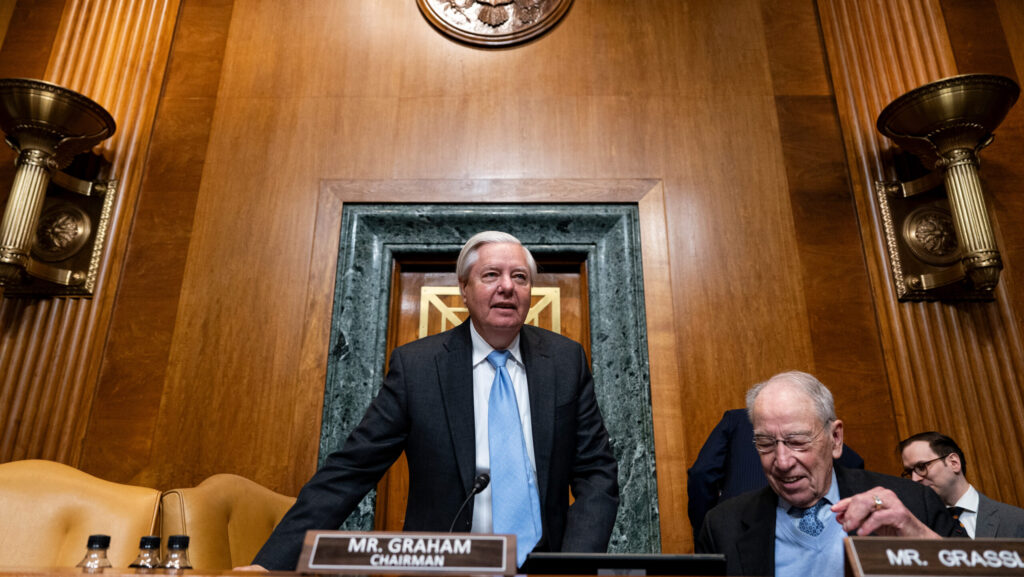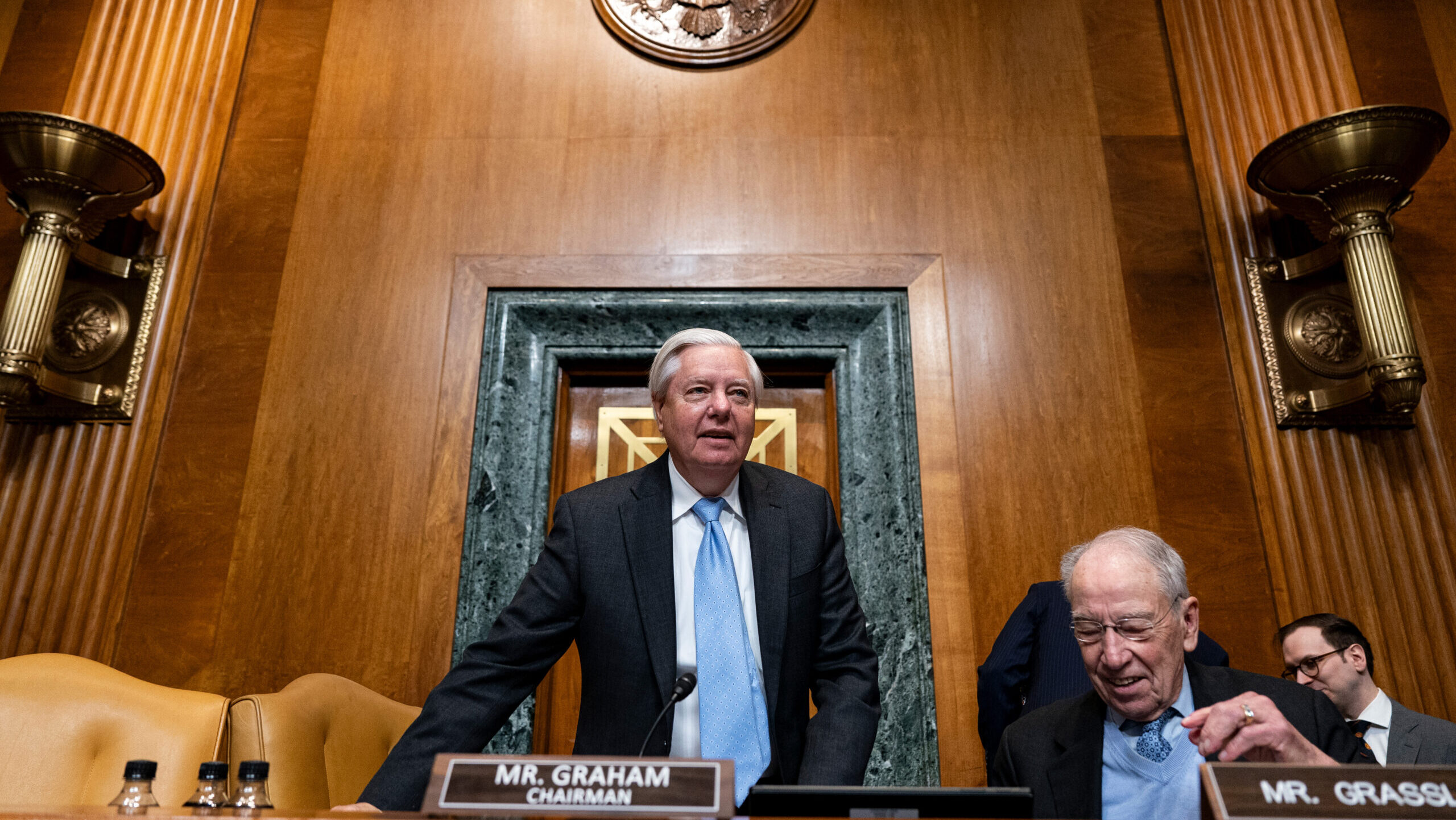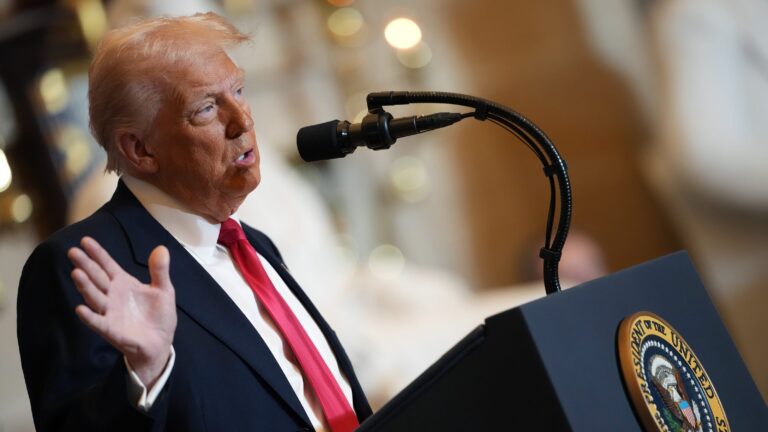

Senator Lindsey Graham, a Republican from South Carolina and chairman of the Senate Budget Committee, center, arrives with Senator Chuck Grassley, a Republican from Iowa, right, during a confirmation hearing in Washington, DC, US, on Wednesday, Jan. 22, 2025. (Photographer: Al Drago/Bloomberg via Getty Images)
WASHINGTON — The Senate Budget Committee has released a budget blueprint that, if ultimately passed by Congress, could add $150 billion in new funds for defense.
Details of exactly what that funding could pay for will be determined by the House and Senate Armed Services Committees if the budget resolution is passed. However, a summary of the bill lays out four main focus areas: maintaining military readiness; growing the Navy and strengthening the shipbuilding industrial base; building an integrated air and missile defense for the United States — a Trump administration priority it has termed the “Iron Dome for America” — and investments in the nuclear enterprise.
The new budget resolution, unveiled today by Budget Committee Chairman Sen. Lindsey Graham, tees up a separate process for the Senate and the House as the two legislative bodies grapple over how best to enact President Donald Trump’s policy agenda.
The goal, as espoused by Trump and supported by House Speaker Mike Johnson, is for “one beautiful bill” containing all the president’s priorities to move through Congress via the process of reconciliation, which allows bills to avoid filibuster and pass with a simple majority. However, the Senate is opting for a two-bill strategy, with a first that focuses on border security, defense and energy priorities and a second to follow that would extend tax cuts enacted in Trump’s first administration.
The Senate Budget Committee will mark up its version of the budget resolution next Wednesday and Thursday. The House has not put forward its own budget blueprint.
“To those who voted for and support real border security and a stronger defense in a troubled world, help is on the way,” Graham said in a statement. “This budget resolution jumpstarts a process that will give President Trump’s team the money they need to secure the border and deport criminals, and make America strong and more energy independent.”
In a January interview with Breaking Defense, SASC chairman Roger Wicker, R-Miss., said he was advocating for “$100 billion a year [for defense] for the next two years” to be added during the reconciliation process, which could help pay for defense needs such as Iron Dome, shipbuilding and submarine production, and sixth-generation fighter aircraft.
In addition to the defense funds, the Senate resolution would add $175 billion in homeland security spending and $175 billion in spending to be determined by the judiciary committees.
It would obligate an additional $85.5 billion to the federal budget each year from FY25-FY28, but that spending would be offset by equivalent cuts, according to a summary of the budget. The text of the bill directs several committees, such as agriculture and education, to identify potential cuts, and all committees would have until March 7 to provide recommendations.
The reconciliation process is just one mechanism that Republicans are looking at in order to obtain funding for a US Iron Dome. Elsewhere, Sens. Dan Sullivan, R-Alaska, and Kevin Cramer, R-ND, introduced legislation this week pushing for $19.5 billion for a US Iron Dome, with expenses including $12 billion to expand missile interceptors in Alaska with Next Generation Interceptors, and $1.4 billion for the Terminal High Altitude Area Defense (THAAD) system.



